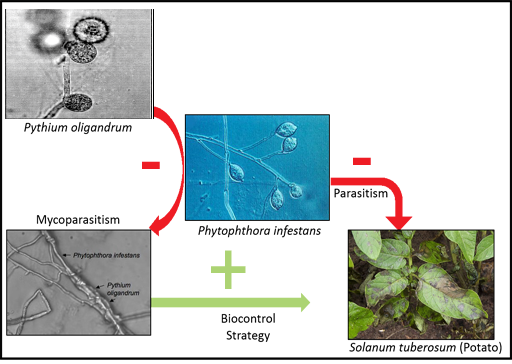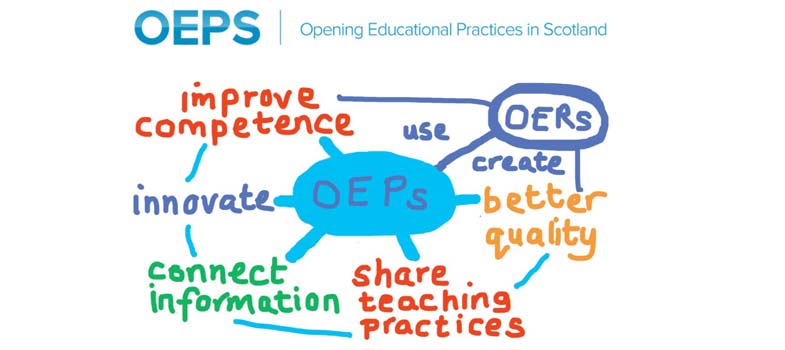2.1.2 Parasites on parasites
Because every living organism is a potential shelter or food source, even parasites can be infected by other organisms. These are called hyperparasites. Hyperparasites are themselves prone to parasites, and numerous examples focused on land plants and animals can be found.
While algal pathology – as a scientific area – is only just taking off, records of aquatic hyperparasites affecting algal pathogens are still scarce and we will therefore use a land-based agriculture example as an illustration (see Figure 3).

While P. infestans is the causal agent of the potato late blight (responsible for the Irish potato famine in the nineteenth century), P. oligandrum is a soil-borne organism that can colonise and decay P.infestans hyphae. Those naturally occurring relationships can be exploited for agronomic purposes: P.oligandrum is the main active ingredient of several biocontrol treatments used to protect cultures from a range of pests.
Will the development of algal pathology reveal such complex and promising interactions?
Further reading
Though under documented, hyperparasites can be also found in marine habitats. If you would like to learn more about how the development of algal pathology can reveal such complex interactions you could also read Gleason et al., 2014 [Tip: hold Ctrl and click a link to open it in a new tab. (Hide tip)] .
2.1.1 Parasites everywhere!
